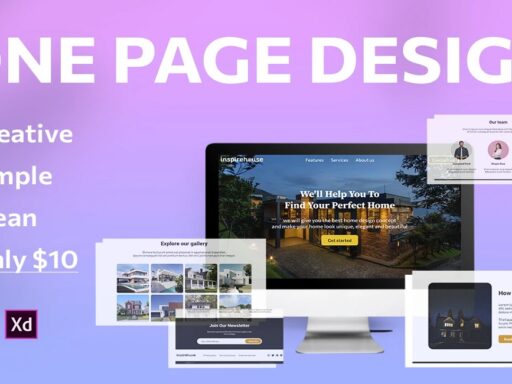In the ever-evolving digital landscape, the synergy between graphic and web designing is more crucial than ever. These two disciplines, while distinct in their own right, come together to create visually compelling and highly functional websites. This fusion not only enhances user experience but also ensures that the brand’s message is communicated effectively. Let’s delve deeper into the world of graphic and web designing and explore how these fields complement each other to produce stunning digital experiences.
Understanding Graphic Design
Graphic design is the art of visual communication. It involves creating visual content to convey messages through typography, imagery, color, and form. Graphic designers use these elements to create everything from logos and branding materials to advertisements and product packaging. Their primary goal is to communicate a specific message or evoke a particular feeling in the viewer.
In the context of web design, graphic designers play a pivotal role in shaping the visual identity of a website. They are responsible for creating the visual elements that define the look and feel of a website, including color schemes, typography, and imagery. Their work ensures that the website is visually appealing and aligned with the brand’s identity.
The Role of Web Design
Web design, on the other hand, focuses on the overall structure and functionality of a website. It involves planning and creating the layout, user interface (UI), and user experience (UX) of a website. Web designers use various tools and technologies to build websites that are not only aesthetically pleasing but also easy to navigate and use.
A good web design ensures that the website is user-friendly and accessible, providing a seamless experience for visitors. This involves creating intuitive navigation, optimizing the site for different devices, and ensuring fast load times. Web designers must also consider SEO (Search Engine Optimization) principles to ensure that the website ranks well in search engine results.
The Intersection of Graphic and Web Design
While graphic design and web design are distinct fields, their intersection is where the magic happens. A well-designed website requires a harmonious blend of both graphic and web design elements. This means that the visual elements created by graphic designers must be seamlessly integrated into the overall web design.
For instance, a graphic designer might create a stunning logo and color scheme for a brand. A web designer will then take these elements and incorporate them into the website’s layout, ensuring that the site not only looks great but also functions well. This collaboration ensures that the website provides a cohesive and immersive experience for users.
The Importance of Responsive Design
In today’s digital age, it’s essential for websites to be accessible on various devices, from desktop computers to smartphones and tablets. This is where responsive design comes into play. Responsive design ensures that a website adapts to different screen sizes and resolutions, providing an optimal viewing experience regardless of the device.
Graphic and web designers must work together to create responsive designs. This involves creating flexible layouts, scalable images, and adaptable typography. By doing so, they ensure that the website maintains its visual appeal and functionality across all devices.
Trends in Graphic and Web Designing
The fields of graphic and web designing are constantly evolving, with new trends and technologies emerging regularly. Some current trends include:
- Minimalist Design: A focus on simplicity and clean design, with an emphasis on negative space and limited color palettes.
- Bold Typography: The use of large, eye-catching fonts to make a statement and draw attention to key messages.
- Micro-Interactions: Small, interactive elements that enhance user engagement and provide feedback, such as hover effects and animated buttons.
- Asymmetrical Layouts: Breaking away from traditional grid layouts to create more dynamic and visually interesting designs.
- Dark Mode: Offering a dark color scheme option to reduce eye strain and create a modern, sleek look.
The Future of Graphic and Web Designing
As technology continues to advance, the future of graphic and web designing looks promising. We can expect to see even more innovative and immersive digital experiences. Some areas to watch include:
- Artificial Intelligence (AI): AI-powered tools and algorithms can assist designers in creating personalized and efficient designs.
- Virtual and Augmented Reality (VR/AR): These technologies offer new possibilities for creating immersive and interactive web experiences.
- Voice User Interface (VUI): With the rise of voice-activated devices, designing for voice interactions will become increasingly important.
- Sustainability: Eco-friendly design practices and sustainable web development will become more prevalent as awareness of environmental issues grows.
The fusion of graphic and web designing is a powerful force in the digital age. By combining the visual appeal of graphic design with the functionality of web design, designers can create websites that not only look stunning but also provide an exceptional user experience. As these fields continue to evolve, staying abreast of the latest trends and technologies will be key to success. Whether you’re a seasoned designer or just starting, understanding the interplay between graphic and web design is essential for creating digital masterpieces.





